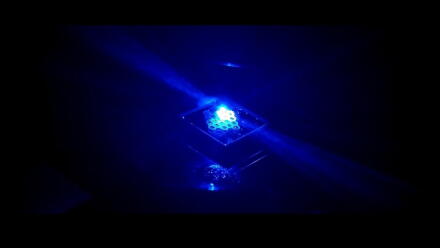Plug & play computational 4D single objective lightsheet

Impact Focus areas
Research area
High throughout organoid imaging with single cell resolution has played a critical role towards drug discovery and advancing medical research. Existing high-throughput live cell imaging methods can have undesired phototoxicity in long-term imaging and do not allow higher depth penetration in cells. This significantly reduces the chances for real-time investigation of cellular responses to disease or treatment.
Researchers at The ANU have developed a computational imaging approach that enables single objective lightsheet imaging using existing epifluorescence image detection systems and/or laser scanning systems. With our computational strategy, single-objective scanning lightsheet devices are no longer constrained to specialised microscopy settings.
Technology
Our computational approach is called Fast Optical Ray (FOR). It is specially designed to reassign fluorescence photons and remove out-of-focus light to improve optical sectioning. In doing so, we reached a spatial resolution of 1.59 (X)×1.92(Y)×1.39µm (Z) without any modification to laser power, wavelength etc. The computational approach of FOR enables it to be tuned over a range of oblique illumination directions and angles; thus paving the way for next generation multi-view single objective lightsheet imaging.
Figure 1: Fluorescent lithography microstructure excited by scanned OP illumination at 60° and retrieved by (left) lightfield depth retrieval and (right) FOR model depth mapping
Potential benefits
- Cost Benefit: Lower cost and complexity compared to eSPIM and SCAPE
- Compatibility: Immediately compatible with conventional epifluorescence detection. The computational imaging scheme only requires a standard microlens array, a single tube lens with a 2D sCMOS sensor.
- Higher Resolution: Improved 3D resolution by using special mapping as opposed to depth retrieval
Potential applications
- Cell biology
- Drug discovery
- High content screening
- Research
Opportunity
We are seeking R&D partnerships, adoption by key opinion leaders and feedback from industry in anticipation that development partners would licence and commercialise the technology.
IP status
Provisional patent application filed July 2022 AU2022902123
Key research team
- Woei Ming (Steve) Lee, Group Leader, John Curtin School of Medical Research
- Tienan Xu, PhD Candidate, John Curtin School of Medical Research
- Hanqi Lin, Technician, John Curtin School of Medical Research



